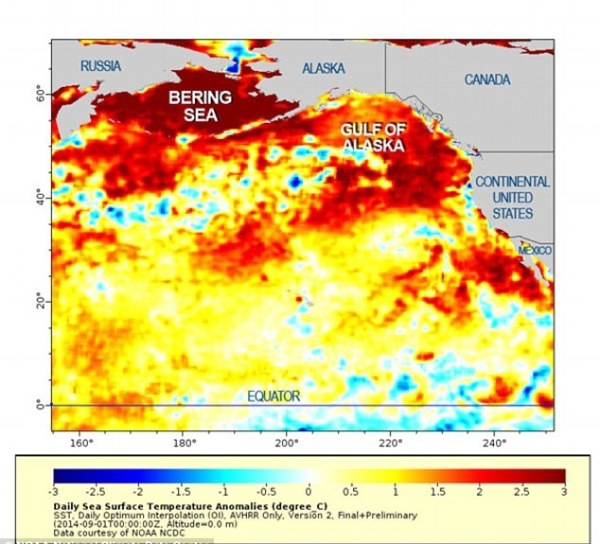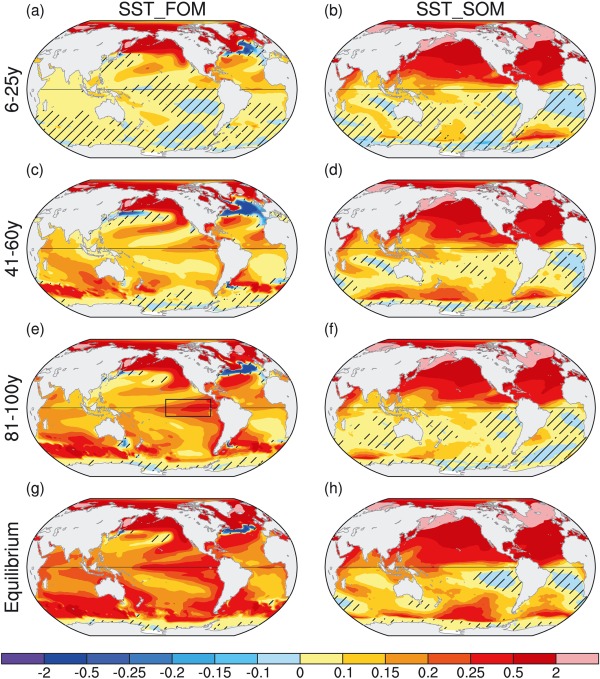How Arctic Sea Ice Loss Could Make the Hot Pacific Blob Permanent
21
June, 2018
From
the North Pacific to the tropics, loss of sea ice will result in a
vastly heated Pacific Ocean in which events like the
recent Hot Blob become
far more common. Those were the conclusions of a new
model study conducted by Wang, Deser, Sun and Tomas and
recently published in Geophysical Research Letters.
(Understanding
how sea ice loss in the Arctic can result in large-scale Pacific
warming.)
An
ocean heating event called the
Blob resulted
in mass loss of sea life during the period of 2013-2014. It was
associated with a towering high pressure ridge in which the upper
level winds ran far to the north and into the Arctic. Beneath the
ridge, temperatures both at the land and ocean surface grew to be
much warmer than normal.
Though
viewed as a fluke by some, many began to draw connections between the
powerful ridge feature, the related Pacific warming, and sea ice loss
in the Arctic. Now, a
new scientific study using
climate models has produced some rather telling findings. First, the
study found that Arctic sea ice loss results in large scale Pacific
Ocean warming within
just 10-20 years of widespread Arctic Ocean ice reductions.
Second, the study models indicated that warming occurred first and
strongest in the North Pacific, but then rapidly translated toward
the Equator.
(Sea
surface temperatures across the North Pacific were much warmer than
normal during
the hot Blob event of 2013-2014.
A new model study finds that sea ice loss will make such extreme
events common.)
The
reason for this change in planetary and Pacific Ocean energy balance
is scientifically described
as a teleconnection.
In very basic terms, loss of sea ice at the Arctic Ocean surface
produces changes in local wind patterns that ripple through the
global atmosphere. After a rather short period of time, wind patterns
in the upper levels of the atmosphere and at the surface in the
Pacific Ocean become involved.
Winds
are often the vehicle by which energy is transferred throughout the
atmosphere and at the surface. So a change in winds, from the top of
the atmosphere to the bottom, can swiftly translate
to a change in surface temperatures.
(A
new model study shows
radical changes in Pacific sea surface temperatures in response to
Arctic Ocean sea ice loss.)
Looking
at the
study,
it appears more likely now that the Northern Pacific Hot Blob of
2013-2014 was not a fluke, but instead an early knock-on effect of
Arctic sea ice loss. A kind of event that will tend to become
commonplace as the Arctic Ocean ice continues to melt. And that
eventually, sooner rather than later, the heat build-up in the North
Pacific will translate south to the Equator. First warming the
Eastern Pacific in a more persistent El Nino type pattern and then
spreading west (see image above).
As
with the Blob, everything from the health of sea life to the
intensity of extreme weather would
be substantially impacted by such large scale changes. In other
words, it looks like large scale losses of Arctic sea ice are enough
to affect a broad and disruptive change in the global climate regime.





No comments:
Post a Comment
Note: only a member of this blog may post a comment.